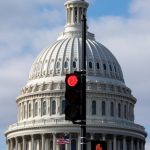New York ( Business) — President Joe Biden’s student loan plan is a potential game changer for Americans drowning in debt. And yet the impact on the broader economy is likely to be so small as to be difficult to measure.
Biden announced Wednesday that his administration will forgive $10,000 to borrowers who make less than $125,000 a year. Low-income borrowers who went to college on Pell Grants will receive up to $20,000 in student loan forgiveness.
This debt relief will give tens of millions of borrowers a breathing space at a time when the cost of living has skyrocketed.

Biden announced that he will forgive $10,000 of student loans for those who earn less than $125,000 per year.
Critically, canceling student debt is being combined with a plan to lift the freeze on federal student debt payments, starting in January 2023. That means many Americans who haven’t had to pay off student loans since March of 2020 will have to start doing so, which will eat up their cash flows.
Despite fears that Biden’s student debt relief will fuel already crippling inflation, economists say the combined impact will be minimal on the broader economy.
“The end of the moratorium will weigh on growth and inflation, while debt relief will support growth and inflation,” Moody’s Analytics chief economist Mark Zandi told . “The network of these cross currents is largely a wash.”
Moody’s estimates that the combined impact will reduce real GDP in 2023 by 0.05 percentage point, reduce unemployment by 0.02 percentage point and reduce inflation by 0.03 percentage point. In other words, a very small effect.
“We’re not talking about raising or lowering inflation by one percentage point or even half a percentage point. We’re talking about a really small impact,” Dean Baker, co-founder of the Center for Economic and Policy Research, told in a phone interview. . “But for people this makes a big difference. It eliminates more than half of the debt of more than half of the borrowers. That’s a big deal.”
Tens of millions of borrowers benefited
The typical college student with loans graduates with nearly $25,000 in debt, according to an Education Department analysis cited by the White House.
Up to 43 million borrowers will receive relief from Biden’s student debt plan, including the elimination of the entire remaining balance for some 20 million borrowers, according to the White House.

The inflationary impact would have been greater if Biden had not imposed an income threshold on debt relief or if he had heeded calls by some progressives to eliminate $50,000 in student debt.
Baker praised Biden’s plan as a “good compromise” that avoided going to extremes.
“It’s helping people, but not giving away the store,” he said.
Some groups, including the National Association for the Advancement of Colored People (NAACP), argue that Biden’s debt relief is not enough given the mountain of student debt in the United States.
“Cancelling just $10,000 of debt is like pouring a bucket of ice water on a wildfire,” NAACP leaders wrote in a Business op-ed.
A bill of US$ 300,000 million
Of course, paying off student debt comes at a cost. And that cost will be borne by taxpayers just as deficit reduction has suddenly become a bipartisan trend in Washington.
A one-time write-off of $10,000 for each borrower earning less than $125,000 will cost the government about $300 billion, according to an estimate this week from Penn Wharton’s budget model. (Penn Wharton’s model did not include the cost of paying off up to $20,000 in student debt for Pell Grant recipients.)
While $300 billion isn’t huge for a $25 trillion economy, the cost of student debt forgiveness would offset the projected federal budget deficit savings from the recently passed Inflation Reduction Act.
“All deficit reduction will be eliminated,” Marc Goldwein, senior vice president and senior policy director at the Commission for a Responsible Federal Budget, told ‘s Poppy Harlow.

Consider that the White House has praised the deficit reduction aspect of the Inflation Reduction Act as an important measure to combat inflation. And this marked a significant change after years of both sides adding to America’s mountain of debt to fight the covid-19 pandemic.
Even Jason Furman, head of former President Barack Obama’s Council of Economic Advisers, has doubts about Biden’s plan.
“Pouring approximately half a trillion dollars of gasoline on the inflationary fire that is already burning is reckless,” Furman tweeted. “To do it by going way beyond one campaign promise ($10K in student loan relief) and breaking another (all propositions paid) is even worse.”
Still, Moody’s Zandi said, this is a “big positive deal for probably about 40 million Americans, mostly low- and middle-income, but [un] small negative deal for all American taxpayers.
‘Send the wrong message’
Beyond the economic impact, Biden’s plan has raised questions about fairness because it only helps people who were lucky enough to go to college.
Rep. Tim Ryan, the Democratic candidate for Ohio Senate, said Biden’s decision on student debt “sends the wrong message to the millions of Ohioans without a degree who work just as hard to make ends meet.” .
“Instead of forgiving student loans for people with six-figure incomes, we should be working to level the playing field for all Americans,” Ryan said.
Citing an analysis by the Department of Education, the White House said nearly 90% of aid dollars will go to those earning less than $75,000.
Student debt forgiveness comes too late for borrowers who worked for years to pay off their loans, only to now see others’ debts erased.
“I take it very seriously,” Baker said of the fairness concerns. “We’re freeing up $10,000, not $50,000 or $100,000. That’s why $10,000 is a good number.”
The real problem continues
No matter the amount, eliminating student loan debt doesn’t fix the underlying problem: college tuition is too expensive.
Between 2000 and 2021, the cost of college tuition increased more than twice the pace of general inflation, according to Moody’s Analytics. That’s despite a slowdown in tuition increases during the pandemic.
The basic basket considered in the Consumer Price Index cost 57% more in 2021 than in 2000, while the cost of university tuition skyrocketed by 167%, Moody’s said.
It’s hard to see how eliminating some student debt solves that problem. And some, including former Treasury Secretary Larry Summers, have warned that debt relief could also help boost tuition.
“Costs are out of control. It’s absurd that people have to borrow large amounts of money and then struggle to pay it back,” Baker said. “That problem is unsolved.”






![[Img #74675]](https://thelatestnews.world/wp-content/uploads/2024/12/They-discover-a-new-class-of-X-ray-sources-in-the-150x150.jpg)







Add Comment